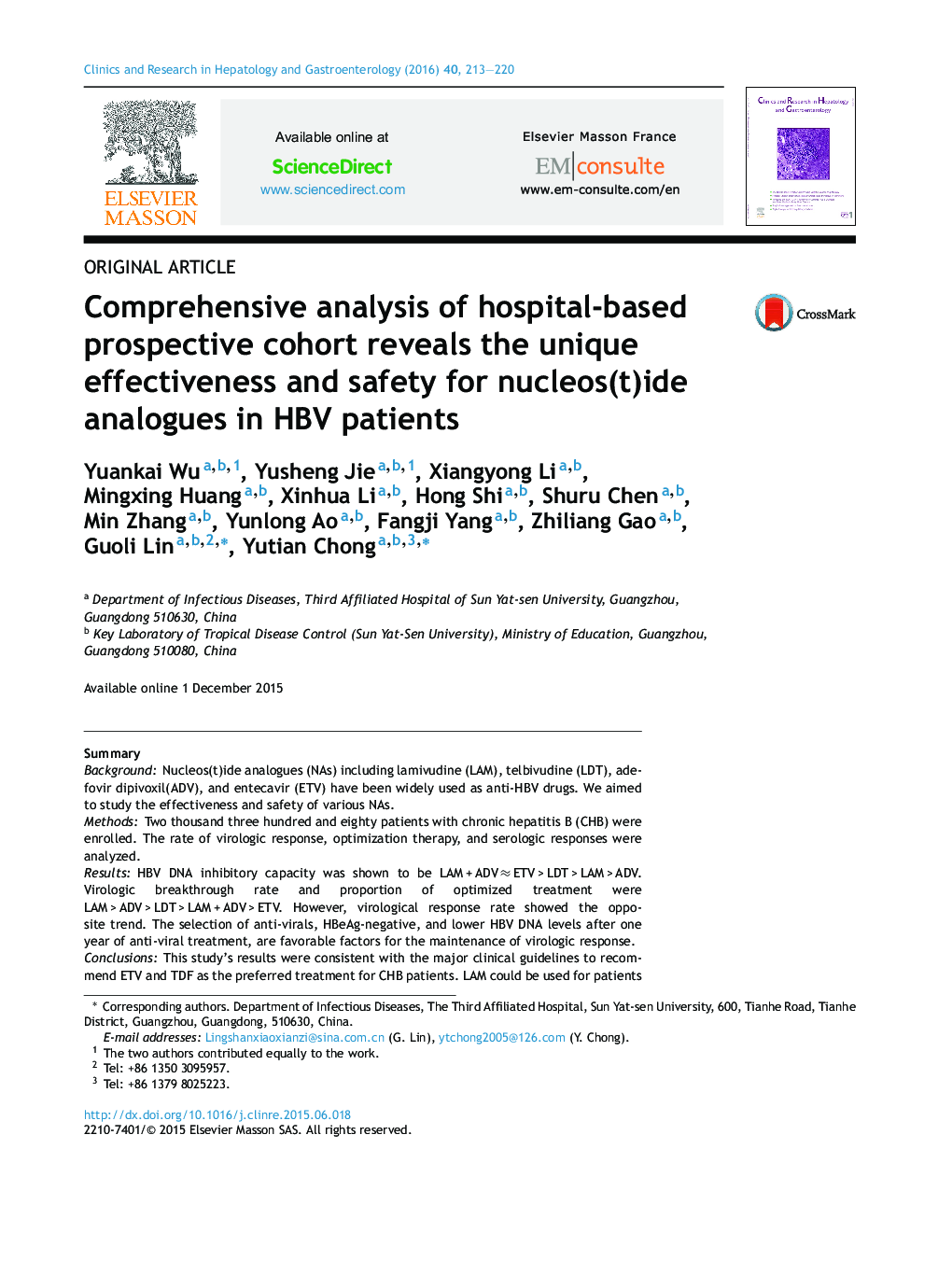| Article ID | Journal | Published Year | Pages | File Type |
|---|---|---|---|---|
| 3286029 | Clinics and Research in Hepatology and Gastroenterology | 2016 | 8 Pages |
SummaryBackgroundNucleos(t)ide analogues (NAs) including lamivudine (LAM), telbivudine (LDT), adefovir dipivoxil(ADV), and entecavir (ETV) have been widely used as anti-HBV drugs. We aimed to study the effectiveness and safety of various NAs.MethodsTwo thousand three hundred and eighty patients with chronic hepatitis B (CHB) were enrolled. The rate of virologic response, optimization therapy, and serologic responses were analyzed.ResultsHBV DNA inhibitory capacity was shown to be LAM + ADV ≈ ETV > LDT > LAM > ADV. Virologic breakthrough rate and proportion of optimized treatment were LAM > ADV > LDT > LAM + ADV > ETV. However, virological response rate showed the opposite trend. The selection of anti-virals, HBeAg-negative, and lower HBV DNA levels after one year of anti-viral treatment, are favorable factors for the maintenance of virologic response.ConclusionsThis study's results were consistent with the major clinical guidelines to recommend ETV and TDF as the preferred treatment for CHB patients. LAM could be used for patients with lower HBV DNA load; ADV may be more applicable to non-cirrhotic patients with HBeAg-negative and lower HBV DNA load. LDT can be used to treat patients with HBeAg-positive, low HBV DNA load, and higher ALT levels due to higher HBeAg conversion rate in a baseline optimized population. The effectiveness of LAM + ADV is similar to and sometimes better than ETV treatment in a CHB population.
